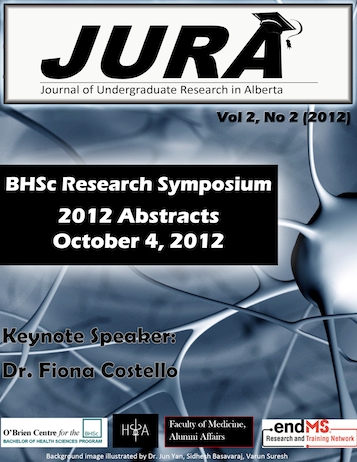The Effect of Co-Culturing Lactobacillusn salivarius with Clostridium difficile on the Production of Clostridium difficile Toxi A and Toxin B
Keywords:
Clostridium difficile, Lactobacillus salivarius, probioticAbstract
Antibiotics alter the composition, and numbers of the normal gastrointestinal (GI) microflora, providing Clostridium difficile, a spore forming, Gram-positive bacillus, the opportunity to colonize the GI tract.1,2,3 C. difficile is the leading cause of hospital-acquired diarrhea, resulting in death of 1% to 2% of infected patients.2,3 It is responsible for GI diseases ranging from antibiotic-associated diarrhea to the more severe pseudomembranous colitis.4 In addition to having resistance to various antimicrobial drugs, the treatment of C. difficile infections with specific antibiotics such as metronidazole often results in relapse, resistance development, and further disruption of the GI microflora.4 Thus, the establishment of an alternative method to combat C. difficile is crucial. Previous studies show that Lactobacillus salivarius, a promising probiotic organism, produces a potent two-peptide bacteriocin that hinders C. difficile growth.5 Previous research indicates that L. salivarius is effective in reducing C. difficile cell count, although none investigated the effect of L. salivarius on the two major virulence factors – toxin A (TcdA) and toxin B (TcdB).6 To this end, this investigation aimed to investigate the influence of L. salivarius on TcdA and Tcd B production. L. salivarius and C. difficile were co-cultured, growth curves of C. difficile, L. salivarius, and the co-culture were generated, and cell-free supernatants at various stages were examined to quantify TcdA and TcdB concentrations. Although there was no noticeable decrease in TcdA and TcdB concentration in the co-culture, C. difficile toxin production was observed to be more multi-phasic in co-culture. Moreover, co-culturing L. salivarius with C. difficile significantly hindered C. difficile growth, confirming previous results. Taken together, the data suggests that the presence of L. salivarius enhances C. difficile toxin production per cell, implying the potential dangers of initiating clinical trials without a comprehensive investigation of the effects of probiotics and the production of C. difficile virulence factors.
Downloads
References
2. Mylonakis E, Ryan ET, Calderwood SB. Clostridium difficile-associated diarrhea: A review. Arch Intern Med 2001;161(4):525-533.
3. Poutanen SM, Simor AE. Clostridium difficile-associated diarrhea in adults. CMAJ 2004;171(1):51-58.
4. Johnson S. Meeting the challenge of recurrent Clostridium difficile infection. Journal of Hospital Medicine 2012;7(SUPPL. 3):S11-S13.
5. Sleator RD, Hill C. Designer probiotics: a potential therapeutic for Clostridium difficile? J Med Microbiol 2008 Jun;57(Pt 6):793-794.
6. Lee Y-, Yu W-, Heo T-. Identification and screening for antimicrobial activity against Clostridium difficile of Bifidobacterium and Lactobacillus species isolated from healthy infant faeces. Int J Antimicrob Agents 2003;21(4):340-346.
Downloads
Published
Issue
Section
License
Authors retain all rights to their research work. Articles may be submitted to and accepted in other journals subsequent to publishing in JURA. Our only condition is that articles cannot be used in another undergraduate journal. Authors must be aware, however, that professional journals may refuse articles submitted or accepted elsewhere—JURA included.


